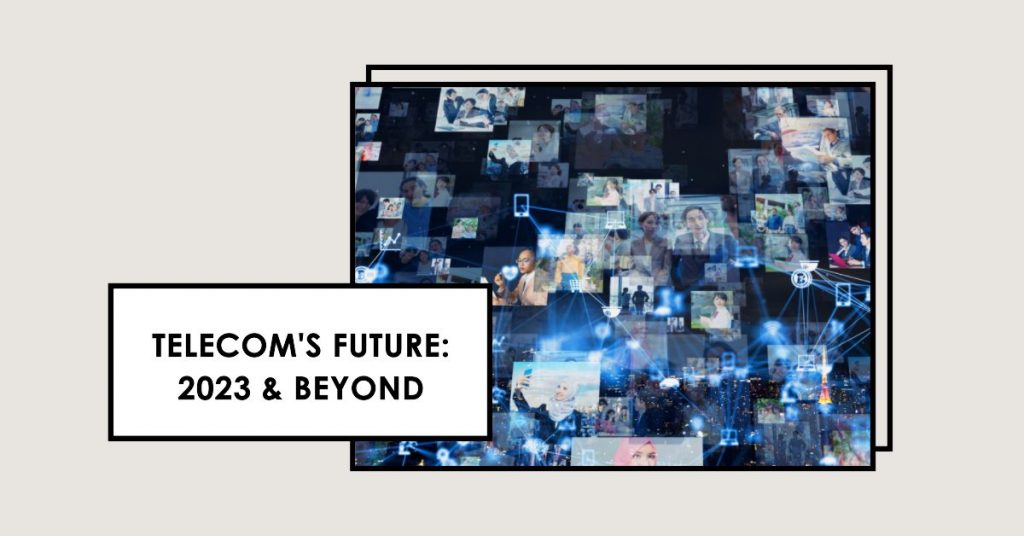
The telecommunications industry is a vital part of our world, continually evolving and adapting to meet the needs of the digital era. As we approach 2023, several trends are poised to redefine the landscape of this sector. From the rise of 5G networks promising faster, more reliable connections, to the integration of artificial intelligence in telecom operations, change is afoot. The need for improved cybersecurity measures is more crucial than ever, while the Internet of Things (IoT) and smart cities represent exciting frontiers of innovation. Furthermore, advances in satellite communication technology are set to transform how we connect in remote areas. These trends are not just reshaping telecommunications; they’re reshaping our world. Let’s delve into these exciting developments and explore what the future holds for telecommunications in 2023 and beyond.
The Rise of 5G Networks
You can’t imagine how drastically 5G networks will transform our lives, making everything from streaming movies to remote work, seamlessly fast and incredibly efficient. As we step into 2023 and beyond, the expansion of these high-speed networks will amplify, providing broader coverage and more reliable connections. The rise of 5G will not only revolutionize personal communications but also innovate various industries. For example, in healthcare, it will enable real-time remote monitoring and telemedicine, while in automotive, it will advance autonomous vehicles. Also, it’s essential to mention the role of 5G in the Internet of Things (IoT), enhancing device connectivity and data transmission. However, as 5G technology continues its upward trajectory, addressing security concerns and infrastructure challenges will be crucial.
Artificial Intelligence in the Telecom Sector
Harnessing the power of artificial intelligence in the telecom sector isn’t just a futuristic concept, it’s an exciting reality that’s transforming the way we communicate and connect. AI is being leveraged for predictive analytics, customer service improvements, and network optimization. Chatbots and virtual assistants are already becoming commonplace, enabling quicker, more efficient customer interactions.
AI is also helping telecom companies predict network congestions and detect potential failures before they occur. This proactive approach reduces downtime and improves user experience. Additionally, AI-powered automation is reducing operational costs and increasing efficiency by handling routine tasks.
In 2023 and beyond, we can expect to see more AI-driven advancements in the telecom sector, revolutionizing the way we interact, work, and live. The future is here, and it’s intelligent.
Improved Cybersecurity Measures
In today’s digital landscape, there’s no denying that improved cybersecurity measures are absolutely vital. As telecommunications companies handle countless data every day, the need for robust security frameworks has become increasingly significant. By 2023 and beyond, there will be a noticeable uptick in the implementation of advanced cybersecurity solutions. These solutions will be aimed at detecting, preventing, and combating security threats, including cyber-attacks and data breaches.
Artificial Intelligence and Machine Learning are expected to play significant roles in enhancing cybersecurity. They will facilitate real-time threat detection and response, thus reducing the impact of cyber-attacks. Furthermore, the development and application of quantum encryption methods will take data security to a whole new level, offering a virtually unbreakable line of defense against cybercriminals.
The Internet of Things (IoT) and Smart Cities
It’s no secret that the Internet of Things (IoT) is revolutionizing our world, transforming everything from our homes to our cities into interconnected, smart ecosystems. As we advance into 2023 and beyond, this trend is set to accelerate. The IoT enables a wide range of devices, from streetlights to traffic sensors, to connect, communicate and exchange data. This forms the basis of ‘smart cities’, where data and technology are used to improve quality of life, enhance sustainability and streamline urban services. As the number of connected devices continues to grow exponentially, we can expect to see more smart cities emerging. However, this increased connectivity also presents significant challenges, such as data privacy and security, which must be proactively addressed.
Advances in Satellite Communication Technology
As you navigate through the complexities of the digital age, you’ll find that satellite communication technology is revolutionizing how we connect, enhancing the speed and reliability of data transmission across vast distances. This technology is set to witness significant advancements in 2023 and beyond. With the advent of low earth orbit (LEO) satellites, connectivity will become more accessible and efficient, even in remote corners of the world. These satellites, being closer to Earth, reduce latency, thereby improving communication speed.
Furthermore, the development of satellite mega-constellations is anticipated to boost global coverage and capacity. Innovations like high-frequency millimeter-wave technology will enable higher data rates, transforming not just telecommunications but also sectors like defense, meteorology, and space exploration. The future holds exciting possibilities for satellite communication.
Frequently Asked Questions
How will the global economic conditions affect the pace of telecommunications advancement in 2023 and beyond?
Global economic conditions can significantly influence telecommunications advancement. Robust economies can fast-track innovation and technology adoption, while economic downturns may slow progress due to reduced spending on research, development, and infrastructure.
What legal or regulatory challenges are expected in the telecommunications industry in the upcoming years?
Potential legal and regulatory challenges in the telecommunications industry may include data privacy and security issues, net neutrality disputes, cross-border data flow restrictions, and compliance with evolving international regulations.
How will the shift towards remote work and online collaboration affect the demand for telecommunications services?
The shift towards remote work and online collaboration is expected to significantly increase the demand for telecommunications services, as more reliable and high-speed connectivity becomes critical for business continuity and productivity.
What impact will the expected trends have on the job market within the telecommunications industry?
Expected trends within the telecommunications industry will likely create new job opportunities, particularly in areas like network infrastructure, cybersecurity and data analysis. However, some traditional roles may become redundant due to technological advances.
How is the telecommunications industry planning to address environmental concerns and promote sustainability in its future developments?
The telecommunications industry plans to address environmental concerns through energy-efficient infrastructure, use of renewable energy, and recycling electronic waste. They’re also exploring sustainable materials for devices and promoting digital solutions to reduce carbon footprint.
Conclusion
In conclusion, we’re on the brink of a telecom revolution. The rise of 5G, AI integration, enhanced cybersecurity, IoT’s expansion into smart cities, and satellite tech advances are leading the charge. As we move into 2023 and beyond, these trends promise to reshape our digital landscape, offering unprecedented connectivity and opportunities. It’s a thrilling time to be part of this ever-evolving industry.








